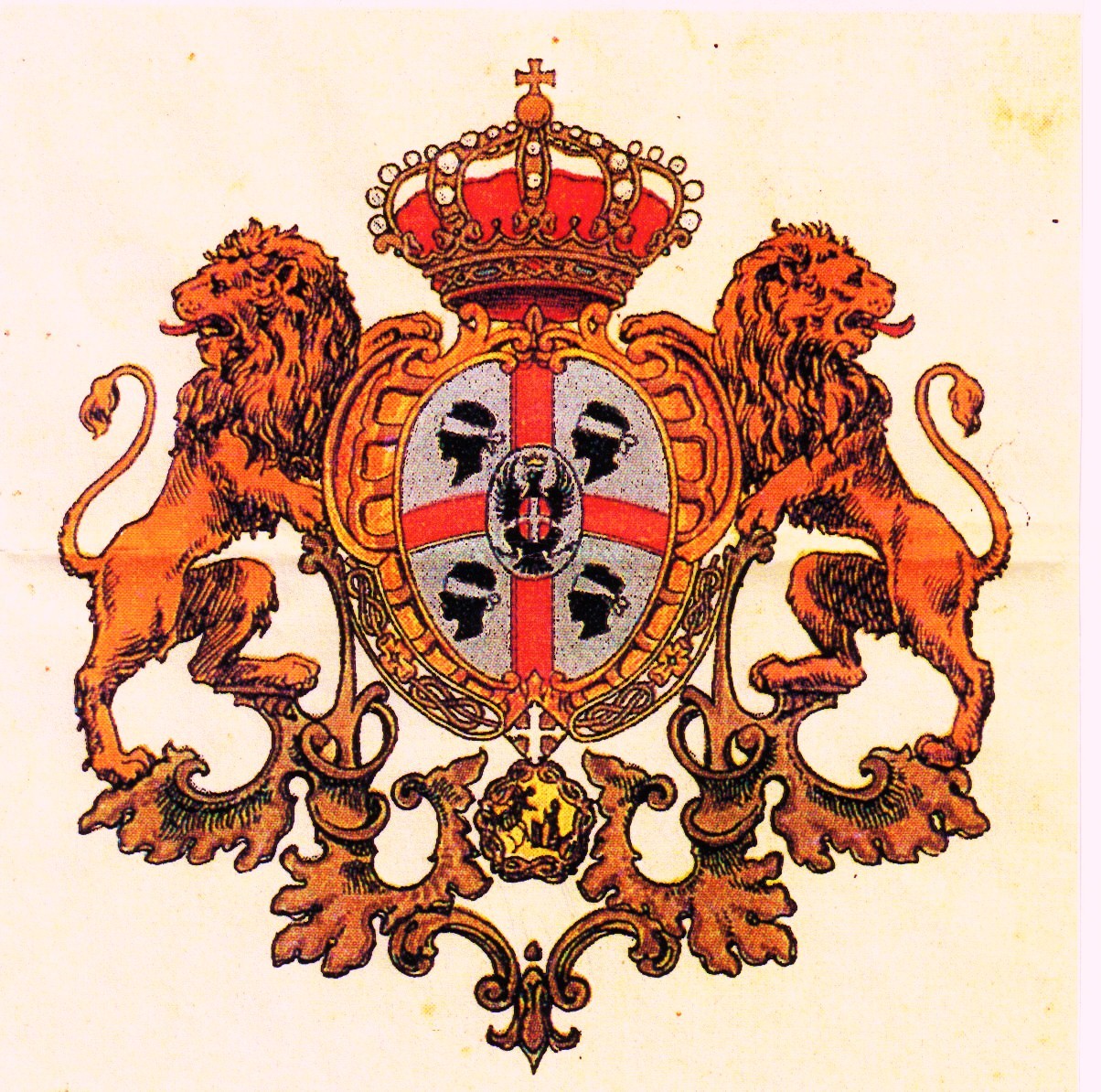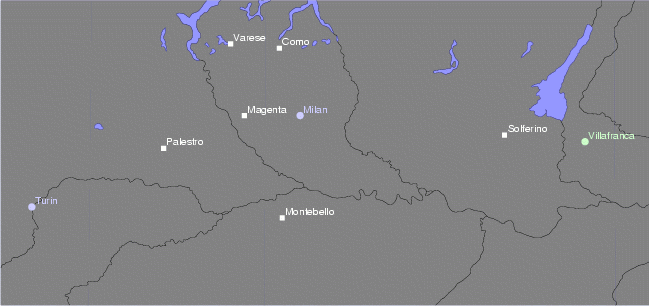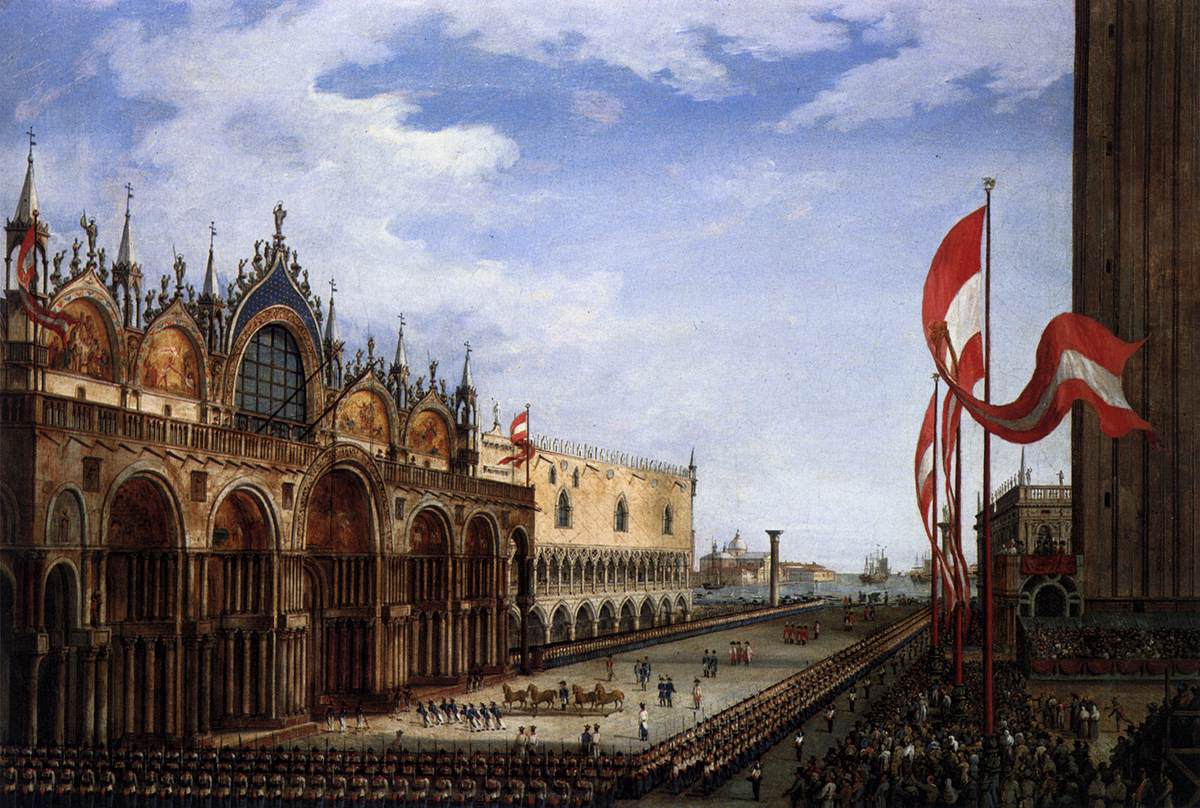|
Rebbio
Rebbio is a southern district () of the city of Como in Lombardy, Italy. Located approximately four kilometres southwest of the city centre, it lies at the foot of the hill dominated by Castel Baradello. Historically an autonomous municipality () with origins tracing back to at least the 14th century, Rebbio was aggregated into the city of Como in 1927. It remains an important transit area and access point to Como from the southwest. History The of Rebbio was part of the within the Duchy of Milan throughout the early modern period. In the mid-18th century, census records listed 715 inhabitants. During the turbulent Napoleonic era and the subsequent Austrian restoration, Rebbio underwent several administrative changes while maintaining its status as a commune. Under the Cisalpine Republic, it was initially assigned to the of Olgiate in 1797, then moved to District I of Como in 1798. This arrangement continued under the subsequent Italian Republic (1802) and the Napoleonic King ... [...More Info...] [...Related Items...] OR: [Wikipedia] [Google] [Baidu] |
Como
Como (, ; , or ; ) is a city and (municipality) in Lombardy, Italy. It is the administrative capital of the Province of Como. Nestled at the southwestern branch of the picturesque Lake Como, the city is a renowned tourist destination, celebrated for its stunning landscapes, artistic heritage, and cultural significance. Its prime location on the shores of Lake Como and its proximity to the majestic Alps has made Como a popular destination for tourists. The city boasts a rich collection of art, religious sites, verdant gardens, museums, theatres, public parks, and opulent palaces, including the iconic ''Duomo'', seat of the Diocese of Como; the Basilica of Sant'Abbondio; Villa Olmo; the public gardens with the Tempio Voltiano; the Teatro Sociale; the ''Broletto'', the city's medieval town hall; and the 20th-century Casa del Fascio, a landmark of modernist architecture. Como has been the birthplace of numerous notable historical figures, including the Roman poet Caecili ... [...More Info...] [...Related Items...] OR: [Wikipedia] [Google] [Baidu] |
Comune
A (; : , ) is an administrative division of Italy, roughly equivalent to a township or municipality. It is the third-level administrative division of Italy, after regions () and provinces (). The can also have the City status in Italy, title of (). Formed according to the principles consolidated in Medieval commune, medieval municipalities, the is provided for by article 114 of the Constitution of Italy. It can be divided into , which in turn may have limited power due to special elective assemblies. In the autonomous region of the Aosta Valley, a is officially called a in French. Overview The provides essential public services: Civil registry, registry of births and deaths, registry of deeds, and maintenance of local roads and public works. Many have a (), which is responsible for public order duties. The also deal with the definition and compliance with the (), a document that regulates the building activity within the communal area. All communal structures ... [...More Info...] [...Related Items...] OR: [Wikipedia] [Google] [Baidu] |
Napoleonic Era
The Napoleonic era is a period in the history of France and history of Europe, Europe. It is generally classified as including the fourth and final stage of the French Revolution, the first being the National Assembly (French Revolution), National Assembly, the second being the Legislative Assembly (France), Legislative Assembly, and the third being the French Directory. The Napoleonic era begins roughly with Napoleon Bonaparte's ''coup d'état'' on 18 Brumaire, overthrowing the Directory (9 November 1799), establishing the French Consulate, and ends during the Hundred Days and his defeat at the Battle of Waterloo (18 June 1815). The Congress of Vienna soon set out to restore Europe to pre-French Revolution days. Napoleon brought political stability to a land torn by revolution and war. He made peace with the Catholic Church and reversed the most radical religious policies of the National Convention. In 1804, Napoleon promulgated the Civil Code, a revised body of civil ... [...More Info...] [...Related Items...] OR: [Wikipedia] [Google] [Baidu] |
Milan
Milan ( , , ; ) is a city in northern Italy, regional capital of Lombardy, the largest city in Italy by urban area and the List of cities in Italy, second-most-populous city proper in Italy after Rome. The city proper has a population of nearly 1.4 million, while its Metropolitan City of Milan, metropolitan city has 3.2 million residents. Within Europe, Milan is the fourth-most-populous List of urban areas in the European Union, urban area of the EU with 6.17 million inhabitants. According to national sources, the population within the wider Milan metropolitan area (also known as Greater Milan) is estimated between 7.5 million and 8.2 million, making it by far the List of metropolitan areas of Italy, largest metropolitan area in Italy and List of metropolitan areas in Europe, one of the largest in the EU.* * * * Milan is the economic capital of Italy, one of the economic capitals of Europe and a global centre for business, fashion and finance. Milan is reco ... [...More Info...] [...Related Items...] OR: [Wikipedia] [Google] [Baidu] |
Varese
Varese ( , ; or ; ; ; archaic ) is a city and ''comune'' in north-western Lombardy, northern Italy, north-west of Milan. The population of Varese in 2018 was 80,559. It is the capital of the Province of Varese. The hinterland or exurban part of the city is called ''Varesotto''. Geography The city of Varese lies at the foot of Sacro Monte di Varese, part of the Campo dei Fiori di Varese, Campo dei Fiori mountain range, that hosts an astronomical observatory, as well as the Prealpino Geophysical Centre. The village which is in the middle of the mountain is called Santa Maria del Monte because of the medieval sanctuary, which is reached through the avenue of the chapels of the Sacred Mountain. Varese is situated on seven hills: the San Pedrino Hill, the Giubiano Hill, the Campigli Hill, the Sant'Albino Hill, the Biumo Superiore Hill, Colle di Montalbano (Villa Mirabello) and the Hill of Miogni. The city also looks over Lake Varese. Climate Varese's winters are not signific ... [...More Info...] [...Related Items...] OR: [Wikipedia] [Google] [Baidu] |
Kingdom Of Italy
The Kingdom of Italy (, ) was a unitary state that existed from 17 March 1861, when Victor Emmanuel II of Kingdom of Sardinia, Sardinia was proclamation of the Kingdom of Italy, proclaimed King of Italy, until 10 June 1946, when the monarchy was abolished, following civil discontent that led to an 1946 Italian institutional referendum, institutional referendum on 2 June 1946. This resulted in a modern Italian Republic. The kingdom was established through the unification of several states over a decades-long process, called the . That process was influenced by the House of Savoy, Savoy-led Kingdom of Sardinia (1720–1861), Kingdom of Sardinia, which was one of Italy's legal Succession of states, predecessor states. In 1866, Italy Third Italian War of Independence, declared war on Austrian Empire, Austria in Italo-Prussian Alliance, alliance with Kingdom of Prussia, Prussia and, upon its victory, received the region of Veneto. Italian troops Capture of Rome, entered Rome in 1870, ... [...More Info...] [...Related Items...] OR: [Wikipedia] [Google] [Baidu] |
Kingdom Of Sardinia (1720–1861)
The Kingdom of Sardinia was the Savoyard state of the Kingdom of Sardinia from 1720 to 1861. The kingdom united the island of Sardinia with the mainland possessions of the House of Savoy. Before 1847, only the island of Sardinia proper was part of the Kingdom of Sardinia, while the other mainland possessions (principally the Duchy of Savoy, Principality of Piedmont, County of Nice, Duchy of Genoa, and others) were held by the Savoys in their own right, hence forming a composite monarchy and a personal union, which was formally referred to as the "States of His Majesty the King of Sardinia". This situation was changed by the Perfect Fusion act of 1847, which created a unitary kingdom. Due to the fact that Piedmont was the seat of power and prominent part of the entity, the state is also referred to as Sardinia–Piedmont or Piedmont–Sardinia, and sometimes erroneously as the Kingdom of Piedmont. Before becoming a possession of the House of Savoy, the medieval Kingdom of Sardin ... [...More Info...] [...Related Items...] OR: [Wikipedia] [Google] [Baidu] |
Second Italian War Of Independence
The Second Italian War of Independence, also called the Sardinian War, the Austro-Sardinian War, the Franco-Austrian War, or the Italian War of 1859 (Italian: ''Seconda guerra d'indipendenza italiana''; German: ''Sardinischer Krieg''; French: ''Campagne d'Italie''), was fought by the Second French Empire and the Kingdom of Sardinia (1720–1861), Kingdom of Sardinia against the Austrian Empire in 1859 and played a crucial part in the process of Italian Unification. A year prior to the war, in the Plombières Agreement, France agreed to support Sardinia's efforts to expel Austria from Italy in return for territorial compensation in the form of the Duchy of Savoy and the County of Nice. The two states signed a military alliance in January 1859. Sardinia mobilised its army on 9 March 1859, and Austria mobilized on 9 April. On 23 April, Austria delivered an ultimatum to Sardinia demanding its demobilization. Upon Sardinia's refusal, the war began on 26 April. Austria invaded Sardin ... [...More Info...] [...Related Items...] OR: [Wikipedia] [Google] [Baidu] |
Kingdom Of Lombardy–Venetia
The Kingdom of Lombardy–Venetia (), commonly called the "Lombardo-Venetian Kingdom" (; ), was a constituent land (crown land) of the Austrian Empire from 1815 to 1866. It was created in 1815 by resolution of the Congress of Vienna in recognition of the Austrian House of Habsburg-Lorraine's rights to the former Duchy of Milan and the former Republic of Venice after the Kingdom of Italy (Napoleonic), Napoleonic Kingdom of Italy, proclaimed in 1805, had collapsed. The kingdom only survived for fifty years—the region of Lombardy was ceded to Second French Empire, France in 1859 after the Second Italian War of Independence, which then immediately ceded it to the Kingdom of Sardinia (1720–1861), Kingdom of Sardinia. Lombardy-Venetia was finally dissolved in 1866 when its remaining territory was incorporated into the recently proclaimed Kingdom of Italy following the kingdom's victory against Austria in the Third Italian War of Independence. History Creation In the Treaty of Pa ... [...More Info...] [...Related Items...] OR: [Wikipedia] [Google] [Baidu] |
Kingdom Of Italy (Napoleonic)
The Kingdom of Italy (; ) was a kingdom in Northern Italy (formerly the Italian Republic (Napoleonic), Italian Republic) that was a client state of Napoleon's French Empire. It was fully influenced by Italian campaigns of the French Revolutionary Wars, revolutionary France and ended with Napoleon's defeat and fall. Its government was assumed by Napoleon as King of Italy and the viceroyalty delegated to his stepson Eugène de Beauharnais. It covered some of Piedmont and the modern regions of Lombardy, Veneto, Emilia-Romagna, Friuli-Venezia Giulia, Trentino, South Tyrol, and Marche. Napoleon I also ruled the rest of northern and central Italy in the form of County of Nice, Nice, Aosta, Piedmont, Liguria, Tuscany, Umbria, and Lazio, but directly as part of the First French Empire, French Empire (as 130 departments of the First French Empire, departments), rather than as part of a vassal state. Constitutional statutes The Kingdom of Italy was born on 17 March 1805, when the Italia ... [...More Info...] [...Related Items...] OR: [Wikipedia] [Google] [Baidu] |
Italian Republic (Napoleonic)
The Italian Republic () was a short-lived (1802–1805) republic located in Northern Italy. Napoleon Bonaparte served as president and its capital was Milan. The republic The Italian Republic was the successor of the Cisalpine Republic, which changed its constitution to allow the French First Consul Napoleon to become its president. The new constitution changed the name of the state to the "Italian Republic"; it consisted of the same areas that had comprised the Cisalpine Republic, primarily Lombardy and Romagna. The republic had a territory of more than , and a population of 3,840,000 in 12 '' départements''. Milan was the capital city, the main center having 124,000 inhabitants in 1764. The country was prosperous despite the plundering experienced in preceding centuries. Its economy was based on cereal agriculture and cattle raising, plus flourishing small industries, notably the production of silk. The flag of the Italian Republic maintained the three Italian-Milane ... [...More Info...] [...Related Items...] OR: [Wikipedia] [Google] [Baidu] |
Cisalpine Republic
The Cisalpine Republic (; ) was a sister republic or a client state of France in Northern Italy that existed from 1797 to 1799, with a second version until 1802. Creation After the Battle of Lodi in May 1796, Napoleon Bonaparte organized two states: one to the south of the Po, the Cispadane Republic, and one to the north, the Transpadane Republic. On 19 May 1797, Napoleon transferred the territories of the former Duchy of Modena to Transpadania and, on 12 Messidor (29 June), he decreed the birth of the Cisalpine Republic, creating a Directory for the republic and appointing its ministers. France published the constitution of the new republic on 20 Messidor (7 July), establishing the division of the territory into eleven departments: Adda ( Lodi), Alpi Apuane ( Massa), Crostolo ( Reggio), Lario ( Como), Montagna (Lecco), Olona (Milan), Panaro (Modena), Po (Cremona), Serio (Bergamo), Ticino (Pavia), and Verbano (Varese). The rest of Cispadania was merged into the Cisalpi ... [...More Info...] [...Related Items...] OR: [Wikipedia] [Google] [Baidu] |








